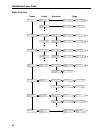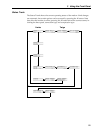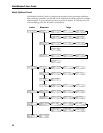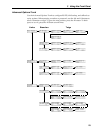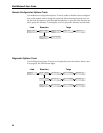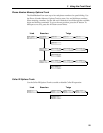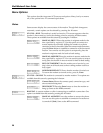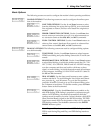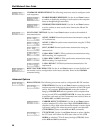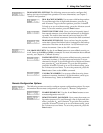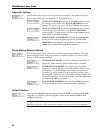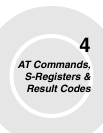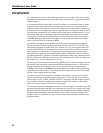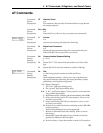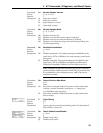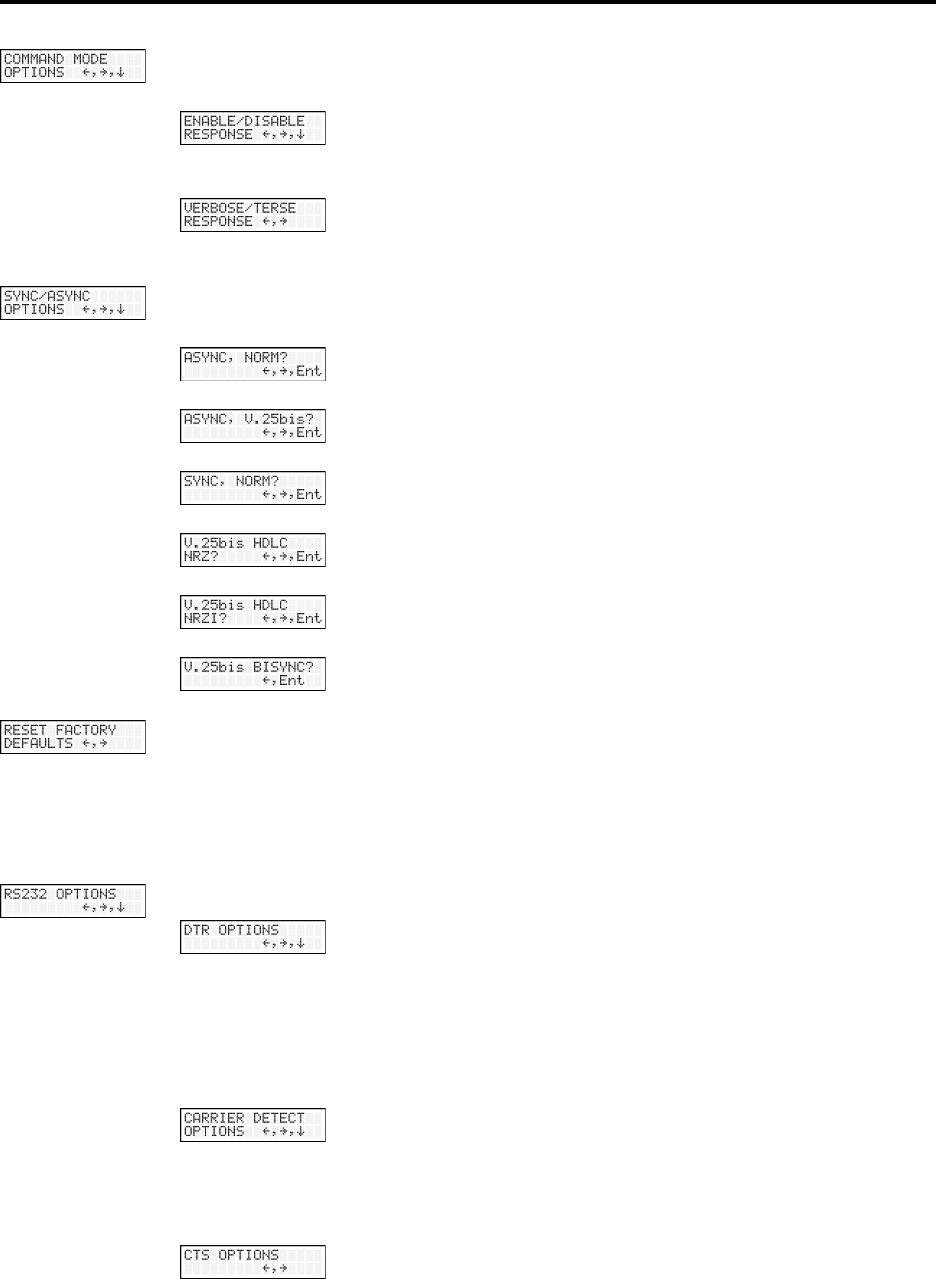
MultiModemII User Guide
28
COMMAND MODE OPTIONS. The following screens are used to configure result
code responses.
ENABLE/DISABLE RESPONSE. Use the à and Enter buttons
to enable or disable the sending of result codes to the computer.
Same as the Q0 and Q1 commands.
VERBOSE/TERSE RESPONSE. Use the à and Enter buttons
to select verbose or terse result codes. Same as the V0 and V1
commands.
SYNC/ASYNC OPTIONS. Use the à and Enter buttons to select the method of
data transmission.
ASYNC, NORM? Normal asynchronous transmission using the
AT command set.
ASYNC, V.25bis? Asynchronous transmission using the V.25bis
command set.
SYNC, NORM? Normal synchronous transmission using any
command set.
V.25bis HDLC NRZ? V.25bis synchronous transmission using
NRZ encoding. Not implemented.
V.25bis HDLC NRZI? V.25bis synchronous transmission using
NRZI encoding. Not implemented.
V.25bis BISYNC? V.25bis bisynchronous transmission. Not
implemented.
RESET FACTORY DEFAULTS. Use the à and Enter buttons to reset Profile 0 and
the modem’s active configuration to the factory defaults. Same as the AT&F&W
command string.
Advanced Options
RS232 OPTIONS. The following screens are used to configure the RS-232 interface.
DTR OPTIONS. Use the à and Enter buttons to select how the
modem responds to the high to low transition of the DTR signal
sent by the computer. DTR NORMAL causes the modem to
hang up; IGNORE DTR allows operation with computers that
do not provide DTR; and RESET ON DTR â causes the modem
to perform a soft reset as if the Z command were received. Same as
the &D0, &D2, and &D3 commands.
CARRIER DETECT OPTIONS. Use the à and Enter buttons
to select whether CD will be forced high (CD FORCED ON) or
whether it will go high when the remote modem’s carrier signal
is detected, and go low when the carrier signal is not detected
(CD NORMAL). Same as the &C0 and &C1 commands.
CTS OPTIONS. Use the à and Enter buttons to select whether
the CTS state will follow the RTS state when on line (CTS
NORM) or whether CTS will always be high (CTS ON). Same
as the &R0 and &R1 commands.



